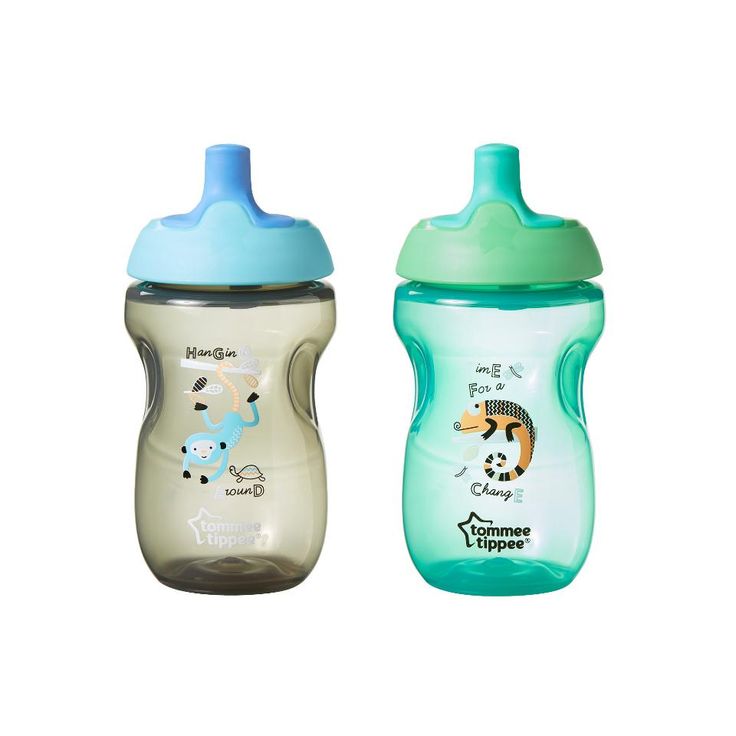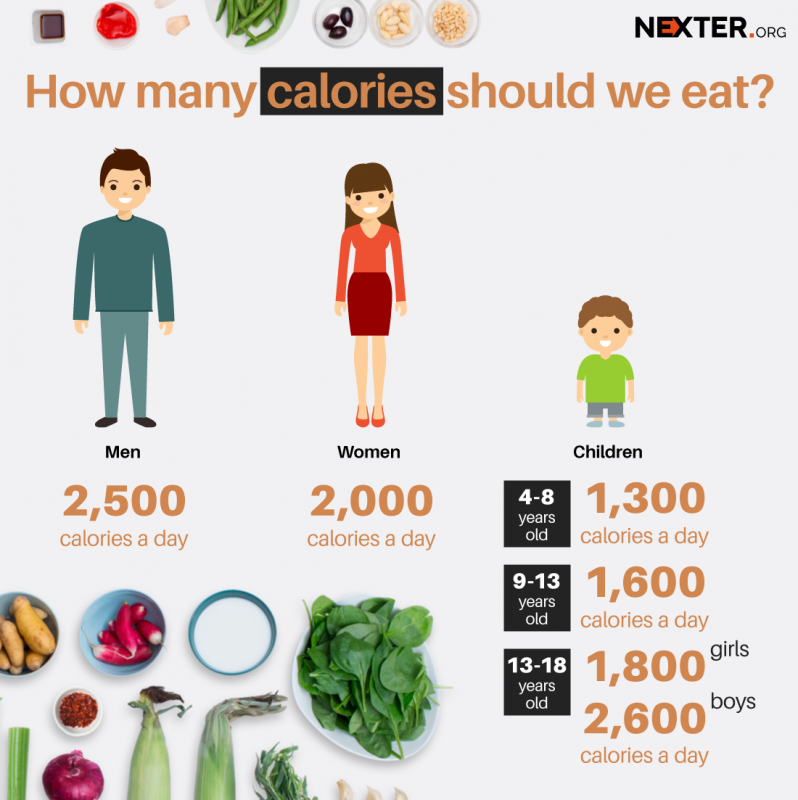Baby proofing cat food
Babyproofing with cats | How to childproof cat food and the litter box • My Mom's a Nerd
Once your baby is mobile and starts exploring the house, the real fun of parenthood begins! If you haven’t babyproofed your home yet, seeing your baby crawl or scoot towards something that they shouldn’t be interacting with is usually the lightbulb moment when parents think, “It’s time to babyproof!”
If you are a proud cat owner and have a new baby or a mobile baby, this post is for you. You want the best protection money can buy for your little one, and you also want your cat to be as comfortable as possible with a new family member around. There are so many products on the market that claim to be the best at baby proofing with cats, but we’ve narrowed it down to the latest and greatest.
We’re sharing two important baby proofing tips in this post — how to baby proof cat food and the litter box.
You will find that as your baby becomes more mobile and aware of their surroundings, their curiosity towards your cat will heighten. Since cats are around eye-level with crawling babies, your child may start following the cat around the house.
It’s inevitable that the litter box and food dish will be discovered at some point. In order to keep your baby safe and your cat happy, here are a few products for your home that will bring peace of mind that your baby isn’t eating something he shouldn’t be, and your cat isn’t feeling panicked at not having a safe space of her own.
Babyproofing with cats is totally manageable, no matter what your home or budget looks like.
How to Baby Proof Cat FoodAs a new parent and a cat owner, you’ve most likely Googled, “Is it bad for a baby to eat cat food?” And don’t feel guilty if your baby has gotten into the cat food; babies are curious, fearless, and are arguably the busiest creatures on earth! Anything on their radar that looks enticing to grab or put in their mouths is fair game.
To prevent your baby from chowing down on cat kibble, we suggest getting creative with babyproofing your cat’s food set up through the useful products listed below.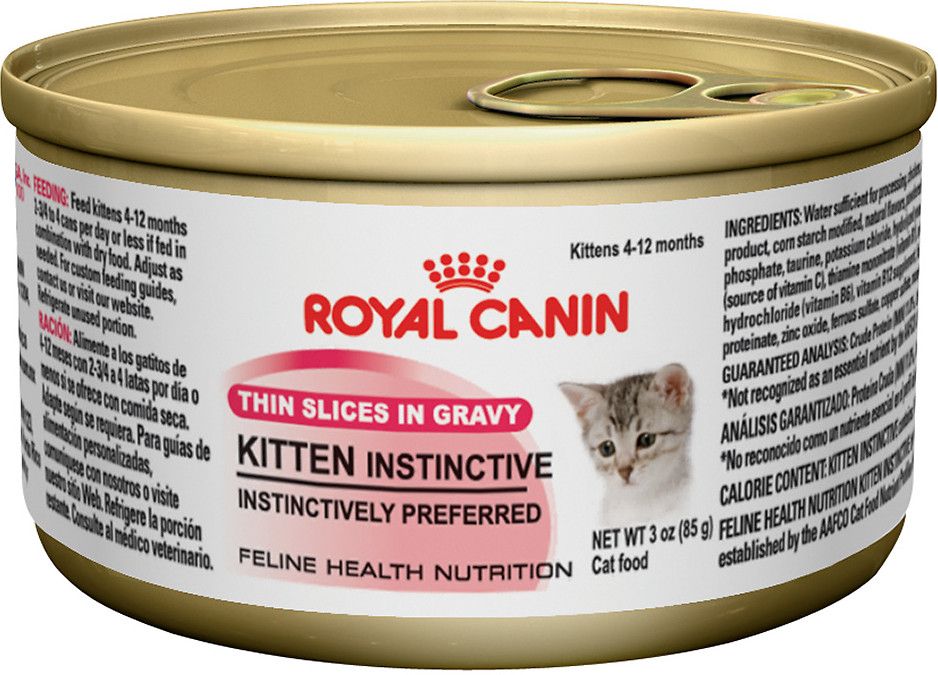
If your cat is a grazer and consistently leaves food in the bowl throughout the day, it’s a sitting target for babies to find the food dish and start investigating what’s inside. An automatic food dispenser, like this one from PetSafe on Amazon is a great option to avoid this situation altogether; you can schedule feeding times when the baby is out of reach, napping, or out of the house entirely, so your cat can enjoy a peaceful meal without stressing about being interrupted and scarfing down their meal too quickly.
Pros
- Automatic features save you time
- Multiple cats? No problem. This attachment allows you to feed both at once
- The baby will see an empty bowl and lose interest
- Also great for feeding your cat when you’re away from home for an extended time
Cons
- The baby could find and press the Manual button to open the lid
- It’s a pricey option for a food dispenser, but worth the investment for some
- This feeder can’t dispense wet food
Once registered with your cat’s microchip or RFID collar tag (included), the like the PetSafe SureFeed (available on Amazon) lid opens when it senses the animal is nearby.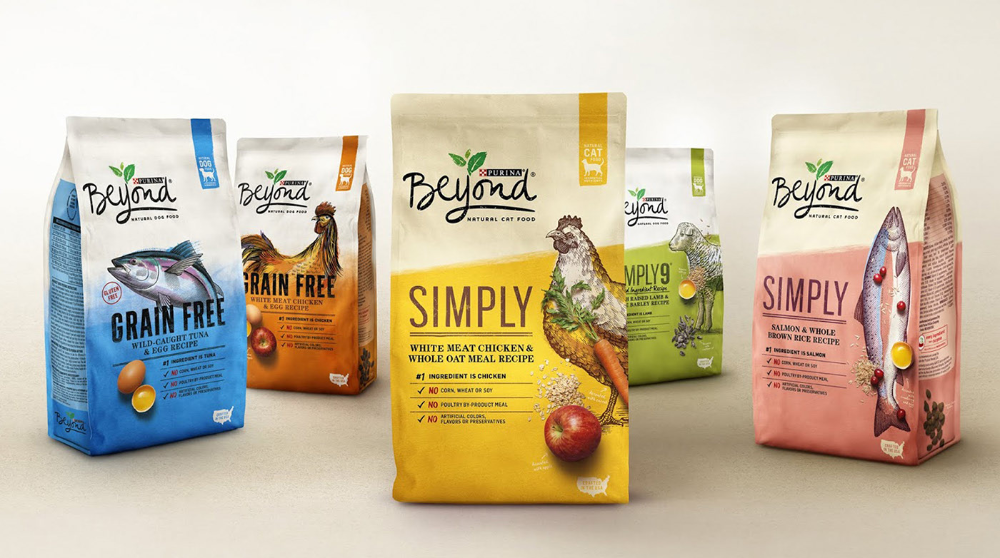 Otherwise, the food lid will remain closed, and your baby can not access the food inside the feeder. This is a great option for families with multiple cats or a very curious baby who finds his way into everything.
Otherwise, the food lid will remain closed, and your baby can not access the food inside the feeder. This is a great option for families with multiple cats or a very curious baby who finds his way into everything.
Pros
- The lid only opens when the registered cat is present
- The baby can not access food unless the lid is open
- Provides peace of mind that your baby can explore without getting into the cat food
- Helps maintain a harmonious relationship between cat and baby
- Works for wet and dry cat food
Cons
- The cat needs to be chipped or wearing the SureCare collar in order for the feeder to work
- Your baby could try to get into the food while the cat is eating
- There’s no barrier on the back of the dish to prevent the baby from accessing the food
- The lid stays open for a few seconds after the cat exits the area, leaving the opportunity for the baby to swoop in
While there aren’t any toxic ingredients in cat food that can harm a child, the bigger concern is if they swallow a large pellet and the choking hazard this presents. Babies are still learning how to move food around in their mouths and how to swallow effectively, and a crunchy piece of kibble isn’t a typical food item in their diet.
Babies are still learning how to move food around in their mouths and how to swallow effectively, and a crunchy piece of kibble isn’t a typical food item in their diet.
Your baby could also have an allergic reaction to a number of the ingredients present in your cat’s food. To prevent any scares like these in your home, we recommend finding an automatic feeder or a food storage option so it’s safely out of your baby’s way.
Cat food or any other pet food should never be a replacement for human food, and if your child consumes a large amount of cat food and you are concerned, don’t hesitate to call Poison Control at 1-888-222-1222.
How to Baby Proof a Cat Litter BoxOf course, thinking about babyproofing with respect to your cat’s kitty litter, you want to keep your child away for health reasons.
Plus, when it comes to the litter box, cats can be highly territorial in this area and will likely act strangely if they feel their privacy is threatened by a baby or another animal. The best way to keep things as normal as possible for your feline friend is by providing a space that is specifically theirs and making sure they know it. If that’s not an option in your home, here are a few other ideas.
The best way to keep things as normal as possible for your feline friend is by providing a space that is specifically theirs and making sure they know it. If that’s not an option in your home, here are a few other ideas.
For cats whose litter box is behind a closed door, this poses a challenge for parents who can’t constantly be on the lookout to open the door so the cat can do their business.
Door Buddy (click to check the price on Amazon) is an adjustable strap that parents can mount to any door in the home that they want to keep babies out of. Door Buddy mounts to the door and door frame, creating tension that a baby (or dog) can’t push through.
The strap holds the door open wide enough that a cat can slip through to their food and litter box, but any larger animal or baby can’t pass through. Should you need to get into the secured room, there’s an unlock latch mechanism that allows you quick access to the area.
Related post: The Best Cat Friendly Baby Gates
Pros
- Hides what is behind a door so baby can’t see in and try to explore
- Create a safe space for your cat to do their business
- Works on pocket doors, double doors, and bi-fold doors
- You can operate Door Buddy with one hand from inside or outside the room
Cons
- You have to unlock the strap each time you want to enter the secured room
- If the baby is persistent enough or hits the door with enough force, the strap could separate from the door
- The semi-permanent adhesive is already attached to Door Buddy, so you can’t swap it out for any other adhesive or velcro
- Semi-permanent adhesive reacts to different textures and may damage walls or paint
For those who don’t have a separate space like a laundry room for their cat to use the bathroom, there are some innovative and sleek litter box furniture options that can blend in with your home decor without sticking out like a sore thumb.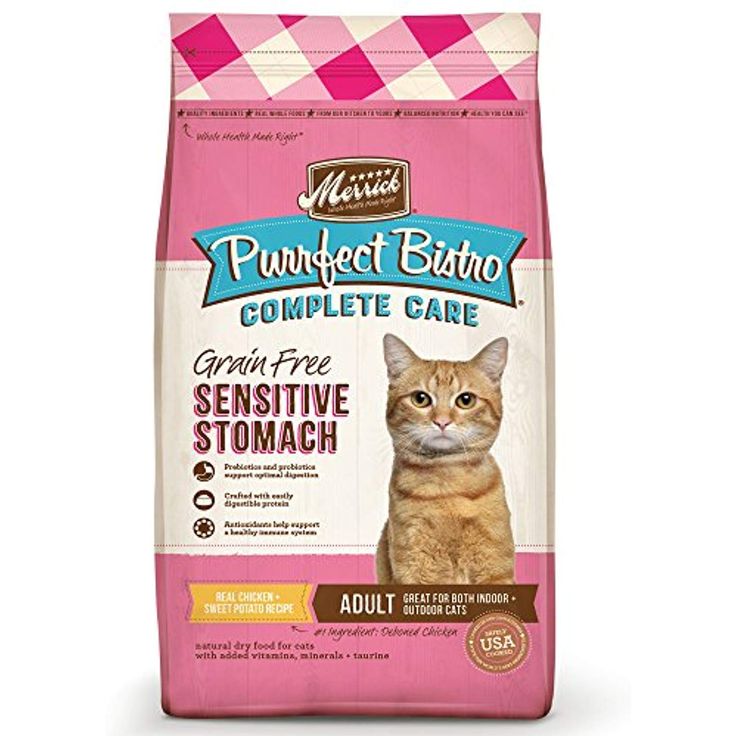
With litter box furniture, you can get the best of both worlds — a concealed way for your cat to take care of business, and discrete enough that your baby won’t look twice at it.
This particular litter furniture piece from Sweet Barks on Amazon can be used as a side table, nightstand, or any other small table in your home. It has a door on the front with a cutout for your cat to climb through in order to get to the box. The door is magnetic, so it will be difficult for a baby to pull it open if they notice the door handle. It’s perfect for babyproofing with cats and decorating your home!
Pros
- Provide your cat with its own space within a discrete piece of furniture
- Magnetic latch on the door prevents baby from easily opening
- Doubles as a nightstand or side table, with a wide top for decor and other items
- Less of an eyesore than traditional litter boxes, and with less litter dragged around the house
Cons
- It may only work for smaller cats to fit comfortably through the opening
- The size of the litter pan inside may not be suitable for multiple cats
- The door latch may not be strong enough to prevent the baby from opening, so you may need to install an additional babyproofing lock on the inside of the door
- It’s a high price point for a litter box, but affordable when considered as dual-purpose
Related post: Have an outdoor cat? Discover the best childproof dog doors!
Is cat litter safe around babies?Generally speaking, cat litter is not harmful to babies.
Because your baby is still growing and developing, his immune system is not as strong as an adult’s. While it’s common knowledge that babies should definitely not consume cat litter or the waste that is in the box, if they do, try not to immediately panic.
There are parasites in cat feces that can cause illness in babies and young children, and that same parasite is the reason pregnant women should never handle a litter box. If you see your baby eating litter or feces, contact your pediatrician just to be safe. They’ll be able to tell you what you should watch for and what to do next. However, looking at babyproofing with cats will help reduce the chance of any of these things happening.
Final Thoughts on Babyproofing with CatsGrowing up with a cat in the house is a wonderful way to teach a child responsibility, friendship, and respect for animals. Studies show that living with a cat or any pet can also decrease a child’s likelihood of developing allergies, asthma, and hay fever later in life. Cat ownership makes you healthier, believe it or not! So babyproofing with cats will also set your child up for wonderful memories and experiences as they grow older.
Cat ownership makes you healthier, believe it or not! So babyproofing with cats will also set your child up for wonderful memories and experiences as they grow older.
Related post: Will having a cat (or dog) help you prepare for having a baby?
Whether your cat was your first baby, or if you plan to introduce a cat into your household while your child is young, there are many great products available that can make this process easy and safe for everyone involved. Following these tips for babyproofing with cats will let you keep both your child and cat safe and happy!
Related posts- Cat-friendly baby gates: Reviews and Buying Guide
- How to childproof dog doors
- Best ways to baby-proof dog food and water bowls
- Should you put a dog bed in the nursery?
- Babyproofing with a rabbit in the home
6 Great Childproof Pet Products For Keeping Your Kids Away from the Kibble
Gear
Microchipped feeders, unspillable bowls, and a damn fine looking food container that keeps kibble locked up tight.
by Jon Gugala
Updated:
Originally Published:
With the proper training, dogs and cats are great around children. But throw food and water into the mix, and you might have problems. House pets can act differently when tiny hands reach for the kibble (food aggression is real). And then there’s the issue of animal waste and preventing your child from going on an archeological adventure in the litter box.
But thanks to a new array of clever pet products, there’s never been a better time to childproof your dog and cat’s everyday needs. We’re talking pet doors that kids can’t slip through, microchipped food dispensers that only open for your pet, and spill-proof food and water bowls that not even the most agro toddler can crack. Here are six ways to help childproof your pet gear.
Ultaca Door Buddy
The Door Buddy protects by means of elimination. For most cats, its narrow opening is wide enough for them to slither through for access to food, water, and a litter box, but small enough to prevent a crawling child’s entry. Its bonus feature is that it also provides a means of retreat for stress-out pets. When not in use, it unhooks and the door opens as normal.
For most cats, its narrow opening is wide enough for them to slither through for access to food, water, and a litter box, but small enough to prevent a crawling child’s entry. Its bonus feature is that it also provides a means of retreat for stress-out pets. When not in use, it unhooks and the door opens as normal.
Buy Now $16
Sure Petcare SureFeed
The SureFeed is pet feeding for the 21st century. Using an RFID chip on your pet’s collar, its food is accessed via a retracting plastic door. When your animal is full and moves out of range (or is chased off by an approaching child), the door closes, sealing off food from tiny hands. If your pet is already microchipped, the device can be programmed to respond to its frequency, or you can use the enclosed tags.
Buy Now $150
simplehuman Pet Food Storage Can
The functional, beautiful Pet Food Storage Can is the most attractive option we found that also includes child-safety features. While there has yet to be a large-scale childproof tub released to market (inventors, take note), the sturdy clamp on simplehuman’s bin must be opened upward, making it all but impossible for short tots to open its airtight seal. An included scoop attaches under the lid.
An included scoop attaches under the lid.
Buy Now $100
Ray Allen Buddy Bowl
Talk to any good military strategist, and sometimes camouflage is the best means of hiding in plain sight. In this analogy, your child is the enemy, and the Buddy Bowl water bowl is the payload you’re trying to conceal. Using a hollowed donut over an otherwise standard bowl, water isn’t immediately visible, hopefully distracting your child from its contents. Should he or she upend it, that same design prevents water from getting out. Meanwhile, its contents are easily accessed by your pets through its center.
Buy Now $27
Carlson Walk Through Pet Gate
Standing 30 inches tall and up to 37 inches wide, the Walk Through Pet Gate is an easy means of segregating child from animal. A small 10-by-seven-inch gate allows kitty through, but not your son’s pumpkin head. Separated, they can stare at each other across a steel-barred DMZ, but your pet can eat in peace.
Buy Now $37
Sure Petcare Microchip Pet Door Connect
Anyone with a doggy door knows that it takes a child approximately . 5 seconds for him or her to be through and into the backyard. That’s why we love the upgrade of the Microchip Pet Door Connect, which, similar to the company’s feed dish, opens only in response to a ‘chipped pet approaching before locking down after. Via a mobile app, you can lock the door when you’re away, as well as monitor pet comings and goings.
5 seconds for him or her to be through and into the backyard. That’s why we love the upgrade of the Microchip Pet Door Connect, which, similar to the company’s feed dish, opens only in response to a ‘chipped pet approaching before locking down after. Via a mobile app, you can lock the door when you’re away, as well as monitor pet comings and goings.
Buy Now $257
This article was originally published on
what to do and what consequences it can have, is it dangerous to eat food for animals
Last night my one and a half year old child got to the cat bowl and ate cat food. Since he felt great at the same time, my husband and I did not call the doctor or do anything about it. But in the morning I looked on the Internet and found out that there is too much toxic vitamin A in cat food, and there are dangerous microbes in it - and now I'm worried.
My question is: how dangerous is cat food for children and should I do something if the child has already eaten it?
Daniil Davydov
medical journalist
Author profile
One serving of cat food will not harm a child. If he has already eaten from the pet's bowl, nothing needs to be done. But in the future, just in case, it is worth putting it in a place inaccessible to the child.
If he has already eaten from the pet's bowl, nothing needs to be done. But in the future, just in case, it is worth putting it in a place inaccessible to the child.
Although manufacturers of dry cat food are required to ensure that no harmful bacteria enter it, the control of pet food is still not as strict as that of human food. And there is also less risk that the child will choke on dry granules.
How cat food differs from human food
Cats are carnivores, so they should eat mostly meat. The main ingredient in cat food is organ meats. These are, for example, the lungs, spleen, kidneys, brain, liver, blood, and bone meal. All this is taken from the carcasses of the same animals from which they prepare food for people. That is, the meat has passed veterinary control and is therefore as safe as human food.
Commercial and household diets for cats - Journal of Feline Medicine and Surgery
In addition, small amounts of grains are added to food for overweight cats. This is necessary to reduce fat content, reduce calories and facilitate digestion due to dietary fiber. Therefore, in terms of basic composition, cat food almost does not differ from human food.
This is necessary to reduce fat content, reduce calories and facilitate digestion due to dietary fiber. Therefore, in terms of basic composition, cat food almost does not differ from human food.
Some links in the article cannot be opened from Russian IP addresses. We hope you know what to do
There are only two ingredients that are more in dry food than in typical human food. Vitamin A is added to all cat food. Food for kittens and cats with certain diseases is also enriched with taurine. But this does not mean that the child will receive too much of these substances from one serving of food.
Nutrition Guidelines for Cats and Dogs - European Pet Food Federation, FEDIAFPDF, 1.3 MB
You did not write how old your cat is, what breed it is, how many times a day you feed it, and what kind of food she eat. Therefore, in the calculations, I assumed that this is an adult outbred animal weighing 5 kg, in the bowl of which there was a daily portion of cat food.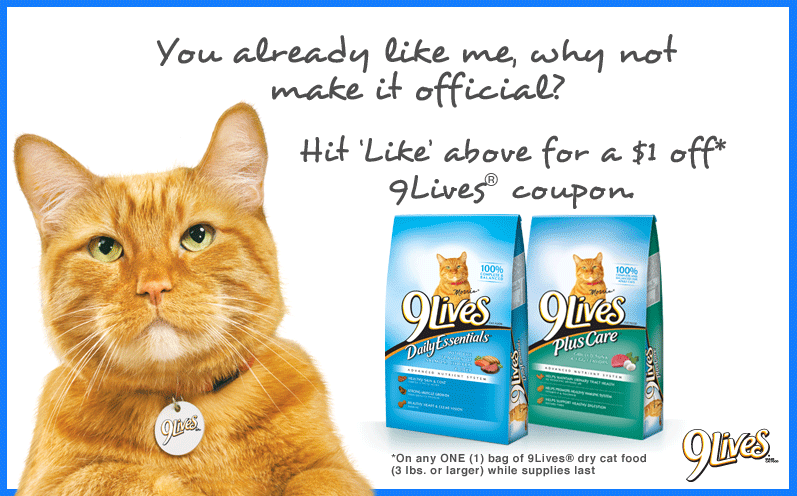 According to the serving size recommendations from the Purina website, this pet needs 55g of dry food per day.
According to the serving size recommendations from the Purina website, this pet needs 55g of dry food per day.
Cat food has more vitamin A. The Association of American Feed Control Officials, AAFCO, recommends that adult cat food contain a minimum of 1 mg and a maximum of 99 mg of vitamin A per kilogram of food. For these animals, it is very important to get a lot of vitamin A, since the health of their visual and cardiovascular systems depends on it.
Recommendations for the content of vitamin A in cat food - AAFCOPDF, 228 KB
Dry cat food, consumer tests - GOST R 702.5.002-2020
At the same time, in foreign dry food, the content of vitamin A usually does not exceed 10 mg/kg, while in Russian it can range from 1.5 to 120 mg per kilogram of dry weight.
Suppose a child ate 55 g of dry food, which contained the maximum amount of vitamin A, i.e. 120 mg/kg. Under such conditions, the child will receive the maximum possible dose of the vitamin - 6. 6 mg. This is about six times more than a child's daily allowance.
6 mg. This is about six times more than a child's daily allowance.
Vitamin A is necessary for the synthesis of the visual protein rhodopsin, but in high doses it is really toxic to the body. If you get too much of it, the symptoms will be similar to any other poisoning: nausea, vomiting, dizziness and blurred vision.
/guide/vitamins/
Vitamins: what foods contain and how to take supplements . Therefore, despite the excess of the norm, the shock dose of vitamin A will not affect the child's well-being. This will not lead to health problems in the future.
Cat food contains more taurine. Both humans and cats obtain taurine from food. But if in the human body it can be synthesized from the essential amino acid cysteine, then cats are incapable of this. And since taurine is needed to prevent blindness, heart problems, tooth decay and hair loss, food for fast-growing kittens, pregnant cats and animals with chronic diseases is enriched with it additionally.
Why cats need taurine - VCA Veterinary Hospital
An adult cat is estimated to need 35 to 56 mg of taurine per day. But most commercial feeds, including those fortified with taurine, contain about 500 mg of taurine per kilogram of dry feed weight. This means that with 55 g of dry food, the child will receive approximately 28 mg of taurine.
Taurine Requirements of Adult Cats - Journal of Small Animal Medicine
In very high doses, amino acids and chemically similar substances can be difficult to digest, and therefore sometimes cause digestive disorders: nausea, pain and heaviness in the abdomen. But there is too little taurine in the feed for this: according to the European Food Safety Authority, EFSA, people of any age can eat up to 6 g of taurine per day without harm to health.
What to do if the child has already eaten cat food
One serving of cat food will not harm the child. If he has already eaten it, most likely there will be no health problems. But in the future, it makes sense to protect the child from encounters with cat food. And that's why.
But in the future, it makes sense to protect the child from encounters with cat food. And that's why.
Harmful bacteria can get into cat food. Dry food is usually free of harmful bacteria because it is made from microbiologically safe meat, cooked at a high temperature that microbes cannot withstand, and tested for safety before being packaged.
How dry cat food is made - Global Alliance of Pet Food Associations, GAPFAPDF, 441KB
However, the control of pet food is still not as strict as that of human food. Therefore, occasionally harmful microbes, such as salmonella, get into them already at the factory, the infection of which is especially dangerous for young children.
Salmonella Infantis Human Multi-State Dry Food Outbreak - Centers for Disease Control and Prevention, CDC
But more often, bacteria get into cat food through damaged packaging or improper storage, such as an open jar or food leftovers from an unwashed bowl. Cases are described when children became infected, even just by playing with dirty dishes from which animals ate.
The child may choke. Children under five have a very narrow trachea. Small, hard kibbles of cat food that are difficult for a child to chew can get caught in the windpipe and cause suffocation.
Cat food is dangerous for children with allergies. Approximately 86% of pet foods contain at least one common allergen, and 43% contain at least two. These are, for example, wheat, fish and soybeans. In some children, the first allergy symptoms appear in the year, so contact with a potential source of allergens without parental supervision may be unsafe.
Frequency of food allergens in pet food - Journal of Allergology and Clinical Immunology
How to stop your child from eating cat food
Place the bowl out of the reach of the child. The easiest way is to put a cat bowl in one of the rooms and install a child safety gate on the door. Then the animal will be able to get to its food, but the child will not.
| The width of the gate and the distance between the bars for devices of different designs may differ. Before buying them, it makes sense to make sure that the cat can squeeze between them. The price of such is 3500 R. Source: market.yandex.ru | The cost of such gates is 3076 R. Source: market.yandex.ru |
Buy an automatic bowl with a lid. Cat food bowls with lids that open only on the signal of an electronic chip or key fob on the collar help to protect cat food from encroachment when the animal comes to eat.
A conventional automatic feeder that dispenses food on time can also help: the less food there is in the bowl, the lower the risk that the child will have time to get to it.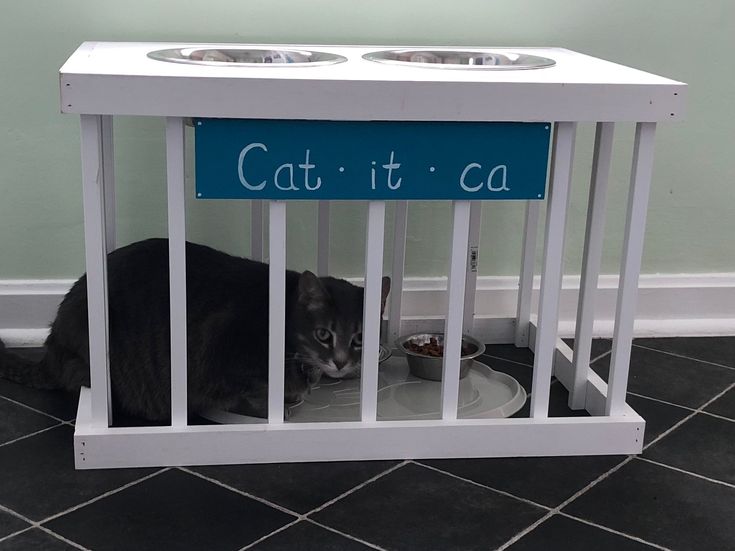
| The cost of automatic feeders that give out a portion of feed over time depends on the design and pricing policy of the manufacturer. The price is 4750 R. Source: market.yandex.ru | The price of this feeder is 3350 R. All prices are valid at the time of publication. Source: market.yandex.ru |
What to do? Readers ask, experts answer
Ask your question
What to do if the child ate cat food
Raising children
- Photo
- Anders Andersson / Moment / Getty Images
by a third: when the first child appears, the mother strokes the diapers and boils the toys. When the second is born - to hell with this iron, the main thing is that the diapers are clean. And with the advent of the third - if the child got to the cat's bowl, then this is the cat's problem. The doctor told us how dangerous such a situation could really be.
When the second is born - to hell with this iron, the main thing is that the diapers are clean. And with the advent of the third - if the child got to the cat's bowl, then this is the cat's problem. The doctor told us how dangerous such a situation could really be.
Therapist at ON CLINIC International Medical Center
Choking
One of the main dangers of food is not its nutritional properties, as many people think, but its shape: a child can choke and suffocate with dry balls. If the child is very young, wet food can also be dangerous, and not just dry food.
What to do:
First of all, parents should make sure that the child is breathing well and without any difficulty. If there is difficulty in breathing, call an ambulance immediately.
Food ingredients that cause allergies
Cheap foods may contain flavors, colors and various flavors that cause allergies. You can compare them with what we eat: with chips, sweets - delicious, but there is little benefit in them. Of course, the worse the food, the harder the child will digest it, the stomach may get sick. But allergies can be caused not only by chemical additives, but also by bioadditives, various vitamins, protein components, and so on.
You can compare them with what we eat: with chips, sweets - delicious, but there is little benefit in them. Of course, the worse the food, the harder the child will digest it, the stomach may get sick. But allergies can be caused not only by chemical additives, but also by bioadditives, various vitamins, protein components, and so on.
It is important to read the ingredients on the sachet to see if there is an ingredient that your child may be allergic to (eg fish, gluten). Small children, especially those under three years old, very often suffer from diathesis, allergies, dermatitis, etc.
It is important to prevent an allergic reaction - edema, urticaria.
First, check that there is no food in the baby's mouth. If there is nothing there, there is no reaction either, then everything is in order. Just let your child drink more water. You can also take smecta and crushed activated charcoal.
- Photo
- Onest Mistic / DigitalVision / Getty images
If the child begins to swell or redness of the skin appears, in this case, you should contact a pediatrician or an allergist-immunologist. If these symptoms increase rapidly, an ambulance should be called immediately.
If these symptoms increase rapidly, an ambulance should be called immediately.
As soon as the parents are convinced that the child does not choke on food, swallows calmly, breathes calmly, there is no acute allergic reaction, several actions must be taken .
1. Observe the child, and if vomiting, diarrhea suddenly appear later, then you need to see a doctor.
2. You need to make sure that the food of the cat or dog was fresh, that there is no non-specific smell, color and texture. Poisoning from food, in principle, does not occur if it is of high quality, not infected or spoiled by anything.
Salmonellosis
Feed may be contaminated with Salmonella (for example, if it was bought in bulk from an open pack in a pet store.
Symptoms: bloody diarrhea, fever, nausea, abdominal pain. In this case, you need to urgently contact an infectious disease doctor.
These are general recommendations, of course, everything must be considered individually.



